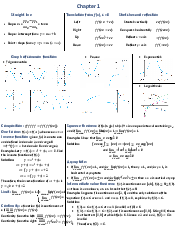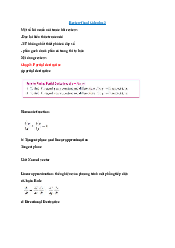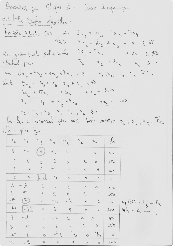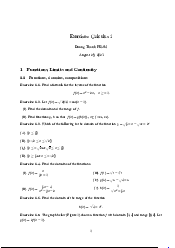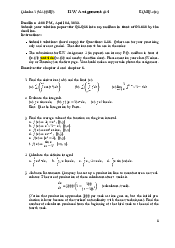


Preview text:
lOMoAR cPSD| 36490632 COURSE OUTLINE For CALCULUS I
Instructor: Assoc. Prof. Dr. Duong Thanh Pham A. COURSE OVERVIEW:
1. Course Objectives: To provide the students with the main ideas and techniques of
calculus, concerning limits, continuity, differentiation and integration.
To provide an understanding of the practical meaning, significance and applications of
these ideas and techniques, through practical examples taken from many areas of
engineering, business and the life sciences
To develop skills in mathematical modelling and problem solving, in thinking logically,
and in creatively applying existing knowledge to new situations
To develop confidence and fluency in discussing mathematics in English.
2. Prerequisite: none
3. Main Content: Functions; Limits; Continuity; Derivatives, Differentiation, Derivatives
of Basic Elementary Functions, Differentiation Rules; Applications of Differentiation:
l’Hôpital’s Rule, Optimization, Newton’s Method; Anti-derivatives; Indefinite Integrals,
Definite Integrals, Fundamental Theorem of Calculus; Techniques of Integration;
Improper Integrals; Applications of Integration. 4. Assessment:
Student’s attendances are checked every lectures. Assignment 20% Midterm Test: 30% Final Exam: 50%
In these examinations, students are allowed to bring only two sheets of A4 paper to write
formulas and important information. 5. Documents:
Main textbook: J. Stewart, Calculus. Concepts and Contexts, 7th ed Other textbooks:
1. J. Rogawski, Calculus, Early Transcendentals, W.H. Freeman, 2008.
2. R.N. Greenwell, N.P. Ritchey, and M.L. Lial, Calculus with Applications for the Life
Sciences, Addition Wesley, 2003.
B. A DETAILED OUTLINE: lOMoAR cPSD| 36490632 Chapter Name of Descriptions Chapter Functions, 1.1 What is Calculus? Limits and
1.2 Straight Lines. Equations of Lines Continuity 1.3 Functions and Graphs
1.4 New Functions from Old Functions. Inverse Functions 1.5 Parametric Curves
1.6 Definition of a Limit. One-sided Limits 01
1.7 Laws of Limits. Evaluating Limits. The Squeeze Theorem 1.8 Continuity
1.9 The Intermediate Value Theorem
1.10 Limits Involving Infinity
Limit: https://hayhochoi.vn/toan-11-gioi-han-cua-
hamso-cach-tinh-va-bai-tap-ap-dung.html Differentiation
2.1 The Tangent and Velocity Problems. Rates of Change 2.2
The Derivative. Higher-Order Derivatives
2.3 Rules of Differentiation. Finding Derivatives using Maple
2.4 Rates of Change in the Natural and Social Sciences 02 2.5 Implicit Differentiation 2.6
Differentiation of Inverse Functions
2.7 Linear Approximations. Differentials. 03 Applications 3.1 Related Rates of 3.2
Maxima and Minima. Critical Points Differentiation
3.3 The Mean Value Theorem. The First Derivative Test. Concavity. Shapes of Curves.
3.4 Curve Sketching. Graphing with Calculus and Computers using Maple 2 lOMoAR cPSD| 36490632 3.5
Indeterminate Forms and l’Hôpital’s Rules 3.6 Maxima and Minima Problems 3.7 Newton’s Method 3.8
Anti-derivatives and Indefinite Integrals 4.1
Areas under Curves and Distances 4.2 The Definite Integral 4.3
Properties of the Definite Integral. 4.4
The Fundamental Theorem of Calculus 4.5 Integration by Substitution 4.6 Integration by Parts 04 Integration
4.7 Additional Techniques of Integration. Partial Fractions
4.8 Integration Using Tables and Computer Algebra Systems 4.9 Numerical Integration 4.10 Improper Integrals
Applications of 5.1 Areas between Curves Integration
5.2 Areas Enclosed by Parametric Curves 5.3 Volumes 5.4 Arc Length 05
5.5 Average Value of a Function
5.6 Applications to Engineering, Economics and Science ------ THE END ------
